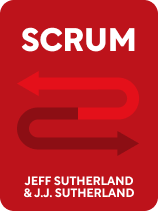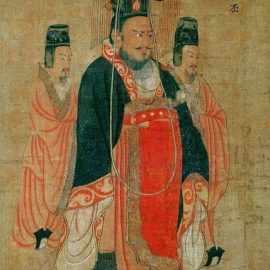

This article is an excerpt from the Shortform book guide to "Scrum" by Jeff Sutherland. Shortform has the world's best summaries and analyses of books you should be reading.
Like this article? Sign up for a free trial here .
Are you wondering what makes a successful team? In what ways do most businesses focus on the wrong achievements?
Jeff Sutherland, software developer and management expert, believes that too much emphasis is put on individual achievements when it comes to business teams. Sutherland thinks that team accomplishments should be celebrated instead, and team accomplishments depend on three traits.
Here’s why ambition, freedom, and integrated purpose are what makes teams successful.
Building and Maintaining an Effective Team
In modern businesses, Jeff Sutherland (the author of Scrum) insists, too much emphasis is put on individual achievements, rather than the team’s accomplishments. But he argues that the team, not individuals, is creating a product, so it’s important to focus on collective performance. This holistic approach to management, emphasizing teamwork, is a pillar of the Scrum framework. Sutherland describes the three common characteristics of successful teams.
Three Traits of Successful Teams
Here’s what makes a successful team, according to Jeff Sutherland.
Ambition
When creating a product, a team must aspire to be great. Without ambition, or what Sutherland calls transcendence, it’s impossible to achieve great things. Just the decision to strive toward a higher goal can be enough to rise above mediocrity. From a leadership perspective, it’s vital to instill in your team a common objective and to explain why that objective is worth pursuing.
Sutherland says one way to inspire your team is to challenge them. Set lofty goals, ones worth achieving, and the team will have a strong sense of purpose.
| Set Audacious Goals In Built to Last, Jim Collins and Jerry I. Porras also argue that success follows ambition. To prove their case, they examine companies that set what they call “big, hairy, audacious goals,” or BHAGs. They argue that merely having a BHAG sets a company up for success because it helps to motivate its workforce. They say that a BHAG should be clear, compelling, and challenging, and they should align with the philosophy of the company. They suggest ways to ensure the success of your BHAGs: Fully commit to your goals: It’s not enough to merely set an audacious goal, the entire organization must be willing to get behind it. Think beyond the profits: Although companies are profit-driven, a visionary company looks beyond the quarterly profits and aims to achieve something great. Continue setting audacious goals: If a company manages to meet one of their goals, they must not stop there. A company that continues setting ambitious goals even after success are more likely to maintain that success. |
Freedom
Once an objective is set, Sutherland says, let the team figure out how to achieve it. A team should organize and manage themselves and be empowered to make their own decisions. This freedom, or autonomy, leads to a happier and more effective team. If people feel they’re being constantly guided by management, it can be deflating. Not only does it rob them of their ambition, but it also stifles their creativity. Both of these can lead to a drastic reduction in productivity.
As a leader, you shouldn’t tell your team exactly what to do or how to do it. Rather, you should provide them with an objective and the necessary tools to complete it. Set expectations, then step back and let them work.
(Shortform note: A results-only work environment (ROWE) is a management strategy that allows for a great deal of freedom. In a ROWE, you measure and compensate employees by their output, or results, rather than the hours worked. Studies show that ROWEs can increase a company’s productivity, retention rate, and employee happiness. Best Buy, for example, implemented ROWEs in the early 2000s. Between 2005 and 2007, voluntary turnover dropped 90% while productivity increased 41%.)

———End of Preview———
Like what you just read? Read the rest of the world's best book summary and analysis of Jeff Sutherland's "Scrum" at Shortform .
Here's what you'll find in our full Scrum summary :
- Why the "Waterfall Method" leads to inefficiency and wasted money
- An explanation of the Scrum method and details on how to implement it
- How to use Sprints to get more work done






